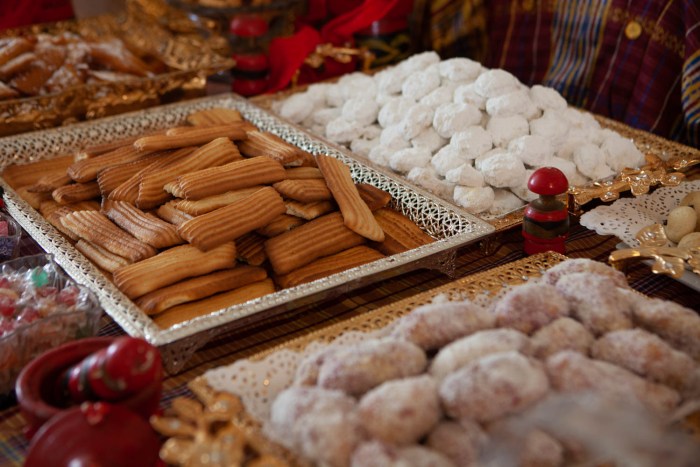Food for Thought

In 2018/9 members of the Hull Refugee Council Women’s Group recreated traditional dishes from home. From Ethiopia, Syria, Palestine, the Democratic Republic of Congo, Sudan and Somalia.
When the women cook, they cook with everything they know and have learned from sisters, aunts, mothers and grandmothers. Familiar ingredients and age-old methods connect the women to their childhoods, memories, culture and countries. Recipes are not written down. Very little is weighed or measured. This is cooking by experience, timing, taste and instinct. Each dish is a story to be told and shared.
Arafa from Sudan

Arafa presents a traditional Sudanese celebration. She cooks fried ribs, beans with meat, gima (crunchy fried potatoes in sauce) kofta (meatballs) and mahshi (courgette, bell peppers and potatoes stuffed with rice). She serves with mulukhiyah leaves and aubergine salad, white salad and peanut butter salad. Finally, on a large, hotplate she makes kisra, the traditional flatbread of Sudan made from fermented sorghum flour.
“Sudanese food brings back good memories to me. Especially the gathering of people together, and when my country was at peace. These dishes are usually cooked for celebrations including ‘The Seven’ (when a baby is seven days old, they are given their name on the seventh). We call this Semaih. It is a gathering of peace, love, almighty and pride.”

Arafa decorates her dining table with a selection of Sudanese treats including her signature version of ka’k (a type of sugar-coated biscuit that melts in the mouth). It is impossible to eat just one. The biscuits and pastries are typically served at special occasions, such as Eid, weddings and births.
l
Faisa from Somalia

Faisa is originally from Somalia and lived 13 years in Syria so her cooking has many influences and flavours. Her signature Somalian dish is sambusa, deep-fried triangles filled with minced chicken and spring onions, or potatoes and other vegetables. Sambusa is eaten especially during Ramadan as an appetiser. Faisa serves it with a fiery, green-chilli dip. She also fries bur, a Somali sweet bread. All is served with chicken and spices, coated drumsticks, an okra, aubergine and tomato stew, and heaps of steaming red and white rice.

“In Somalia mama was always cooking. When I see mama cooking I wanted to learn. I was very small, about eight or nine. When I was about 15 I first made sambusa. It made mama happy.”
Honorata from DR Congo

Honorata salts tilapia fish and dries it in the sunshine on her windowsill. She then grills the fish, pulls it apart and adds to a steaming pan of cooked cassava leaves. She adds redskin peanuts, chopped celery, green pepper, leek, garlic, aubergine and stock. To make African porridge called ugali, Honorata uses a long, wooden spoon brought with her from the Congo. She sets the pan on the floor, pulls up a stool and effortlessly beats the thickening mixture.
“This is how we do in Congo! I learned to cook from my mother. The first thing she taught me to cook was this porridge. In our country life is very hard. The girl starts to cook at six or seven years old because the mother has to get up early and go to business or work. The girl has to learn how to cook cassava and ugali for the whole family.”
Shuke from Ethiopia

Shuke makes the traditional flatbread injera from red or white ground teff. This ancient grain is grown in the highlands of Ethiopia. The batter is beaten by hand then left to ferment for a couple of days. It is then poured onto a hotplate from a height. This encourages air into the batter to give the injera its distinctive bubbles. Shuke serves with beans, soup, chicken and egg.
“I start to cook injera when I am a child. My mother made every week. I learned from her. Injera is part of our national food. It is made for important events, weddings and celebrations. When I make injera I call my neighbours to come and we sit and eat it, together.”

Lee Karen Stow
Lee is a PhD candidate in visual research funded through the North of England Consortium for Arts and Humanities (NECAH) at the University of Hull. Since 2012 she has worked alongside women resettled as refugees to Hull. Lee works with the women to co-create exhibitions and visual storytelling to share insights into personal experiences of forced migration and resettlement.
All photographs on this page are © Lee Karen Stow



